Apps We’re Trying: AnyDesk
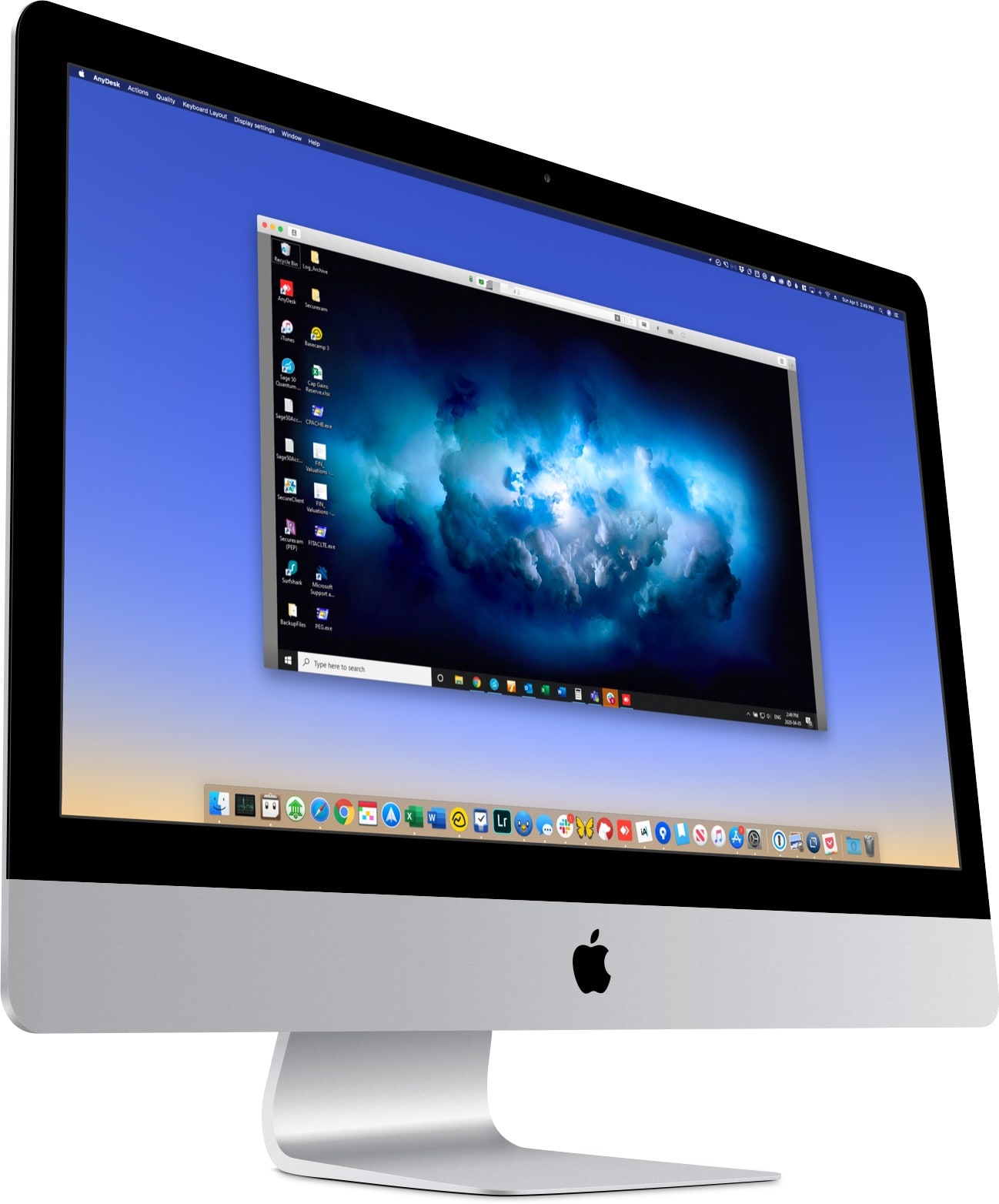
Our review of the best remote access solution for macOS and iOS may be a bit dated right now, but the pick likely hasn’t changed: Screens VNC is still as rock solid and as beautiful as ever before. In fact, Screens for iOS was just updated to properly support the new cursor support on the iPad, making for what should be an excellent experience zipping around on your Mac through your iPad.
I do admit, however, that I haven’t had as much luck with Screens as I’d personally like. I have a home Eero network that requires a little fiddling to get working through Screens Connect, and my office PC is connected to an older router. Plus, even now, after attempting to get it work for the better part of an hour, I cannot get Screens Connect to work.
With the onslaught of tax filing needing to be done from home last week, I needed to figure out a way to access my work PC from my iMac at home.
AnyDesk quickly saved the day. Very little fiddling was required to get it to work (in fact, just download and go), and thanks to two strong internet connections on both ends, AnyDesk almost had me feeling like I was running a full-on Windows PC on my iMac from miles away.
Download and Setup
AnyDesk’s macOS and PC software can be downloaded for free for personal use from their website. If you’re using AnyDesk for work, they offer a few different enterprise/commercial licenses to get you up and running that start at $10.99/month.
Once you have the software downloaded on both computers, you simply need to note your desk’s access code to jump into action. To get around having to have another individual on the other end of your connection, a few settings should be enabled:
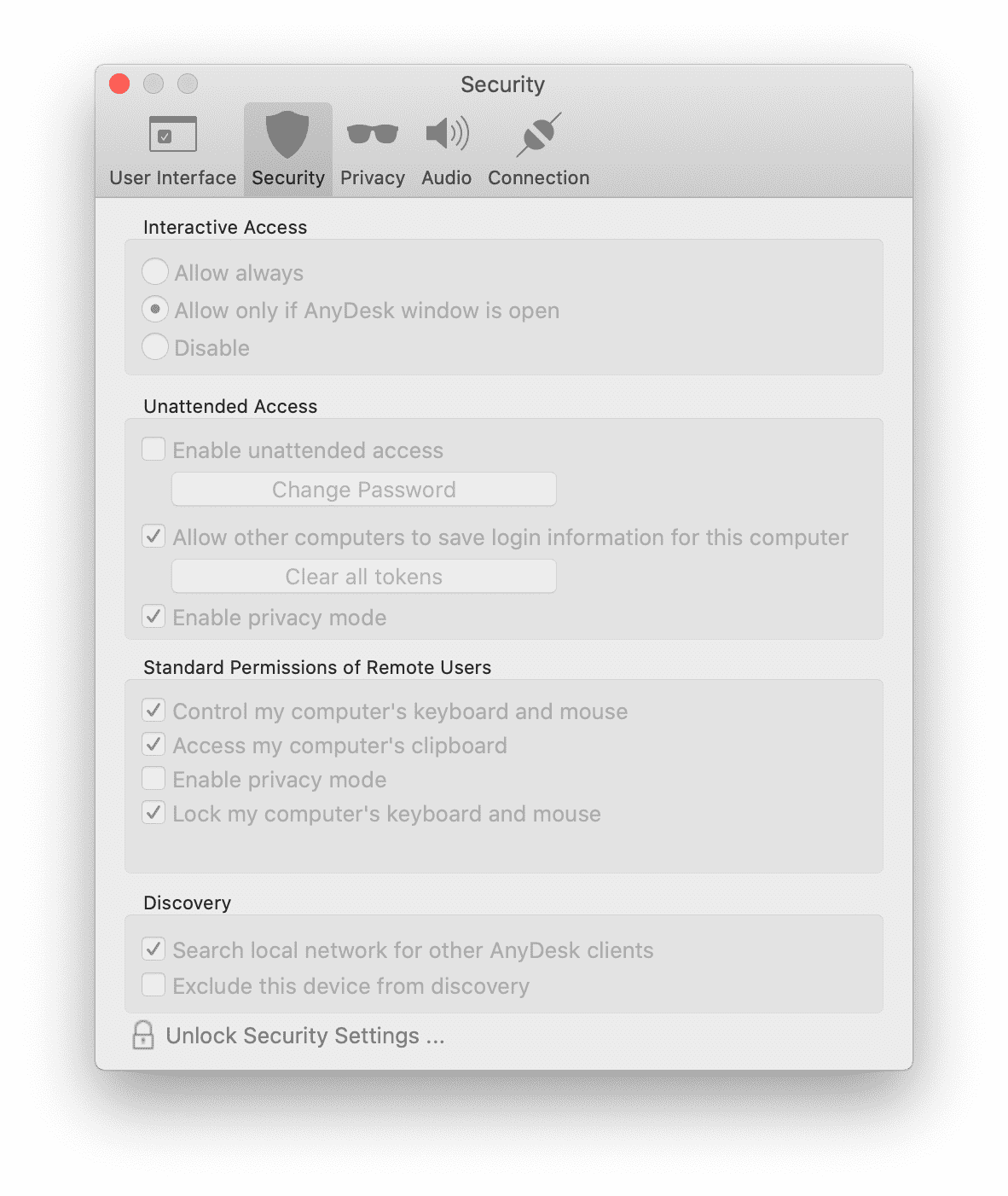
- Interactive access can be set to “Always Allow” to enable you to jump into action with AnyDesk explicitly open.
- Enable unattended access (password protected) to allow yourself to log in from anywhere you have an internet connection.
- Enable privacy mode to ensure individuals on the other end of your connection aren’t snooping.
I also opted to allow all remote keyboard shortcuts, just to make it feel as first-party/natural as possible. There’s nothing quite like jumping into Microsoft Excel through a VNC/remote access client like AnyDesk and quickly initiating a keyboard shortcut that either doesn’t work or does something completely different than expected.
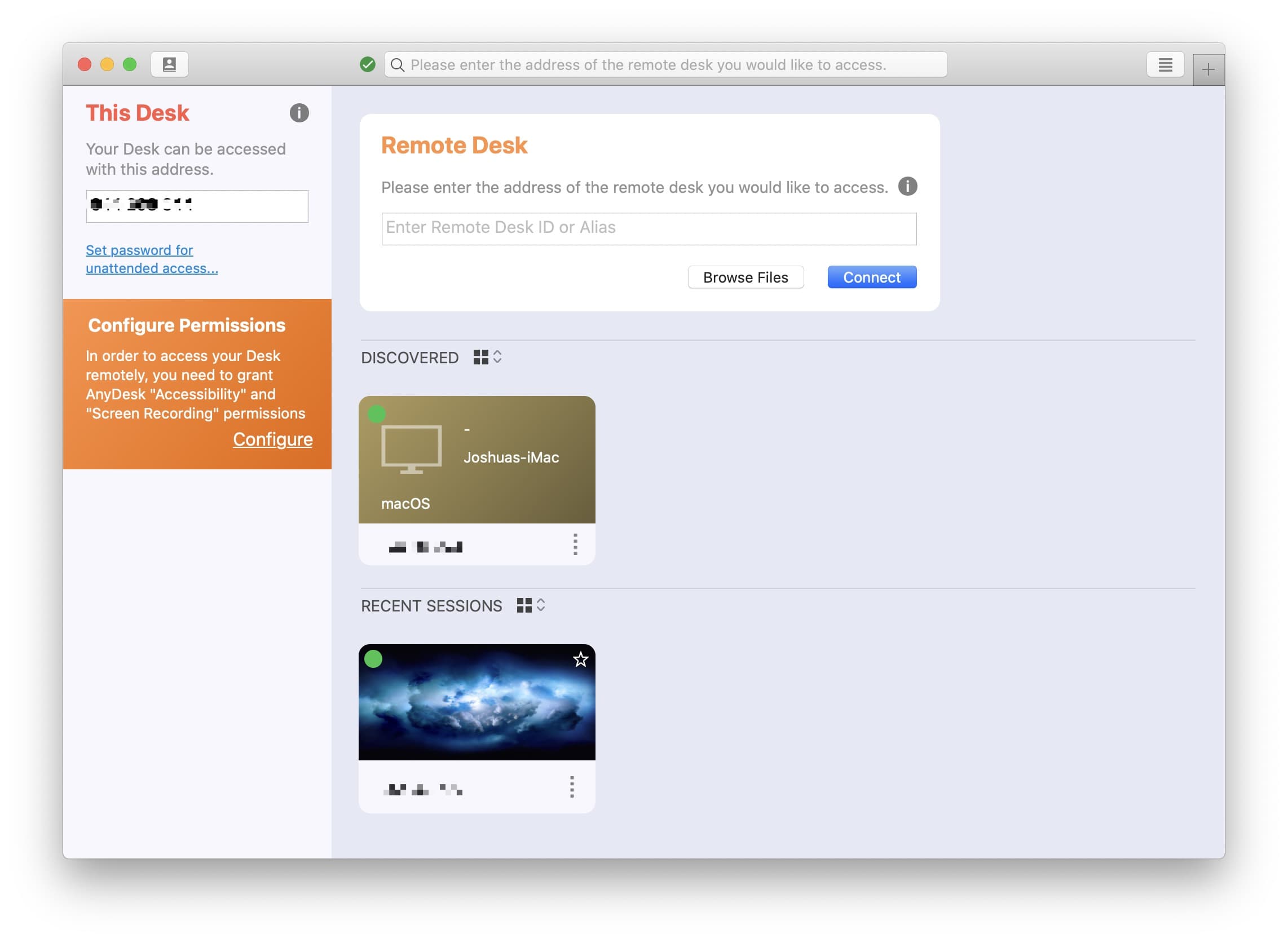
Once you’re ready to go, drop the nine-digit access code into AnyDesk’s main screen, await your connection, and you’re off. After you’ve completed your session, AnyDesk will remember that specific computer, ensuring you don’t have to remember the access code each time.
Using AnyDesk for Remote Access
My experience with AnyDesk over the last two weeks has been nothing short of stellar, albeit with a few workarounds in place. Once you’ve started your session, AnyDesk excels at making it feel like you have a second working computer running right on your iMac.
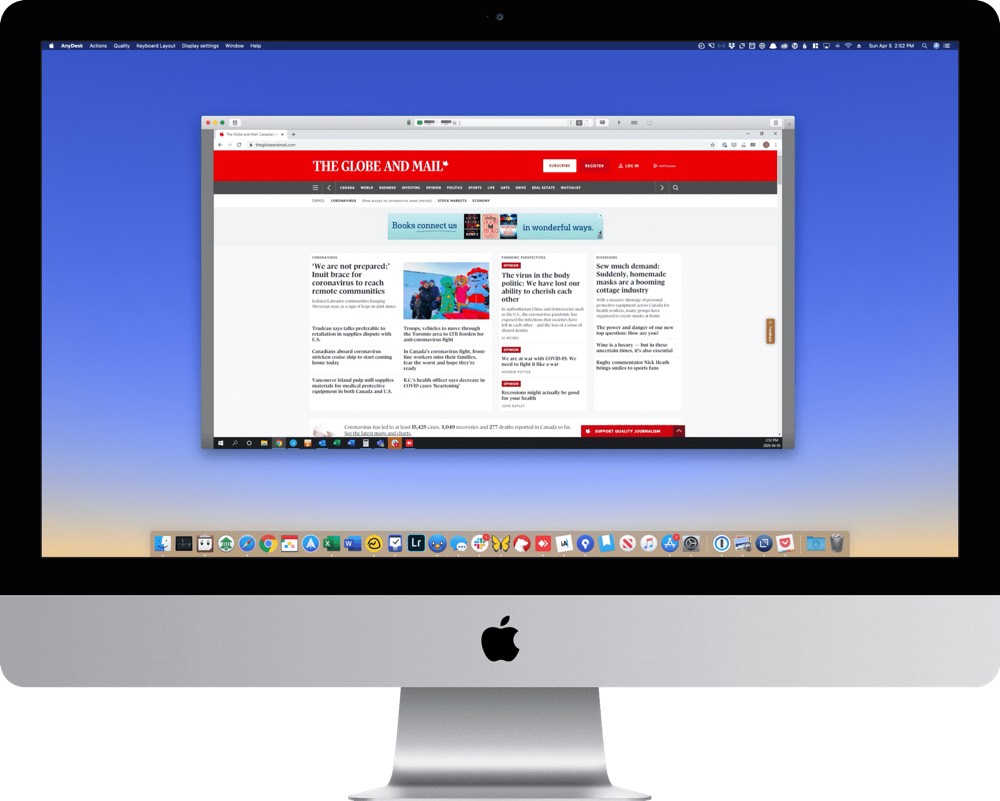
You can resize your window to fit appropriately in your display and you can jump between multiple displays by switching between the numbered boxes in the address bar. You can maneuver through your connected computer as though you were sitting in front of it.
In general, I have strong internet connections on both ends of my AnyDesk connection, so this may be a variable that inhibits the experience for other users. Overall, my experience has been rock solid — clicks on the connected computer initiate immediately, ensuring you don’t move in and out of flow waiting for your connected computer to catch up. If you have a poor internet connection, I’d be curious to hear about your experience in this regard.
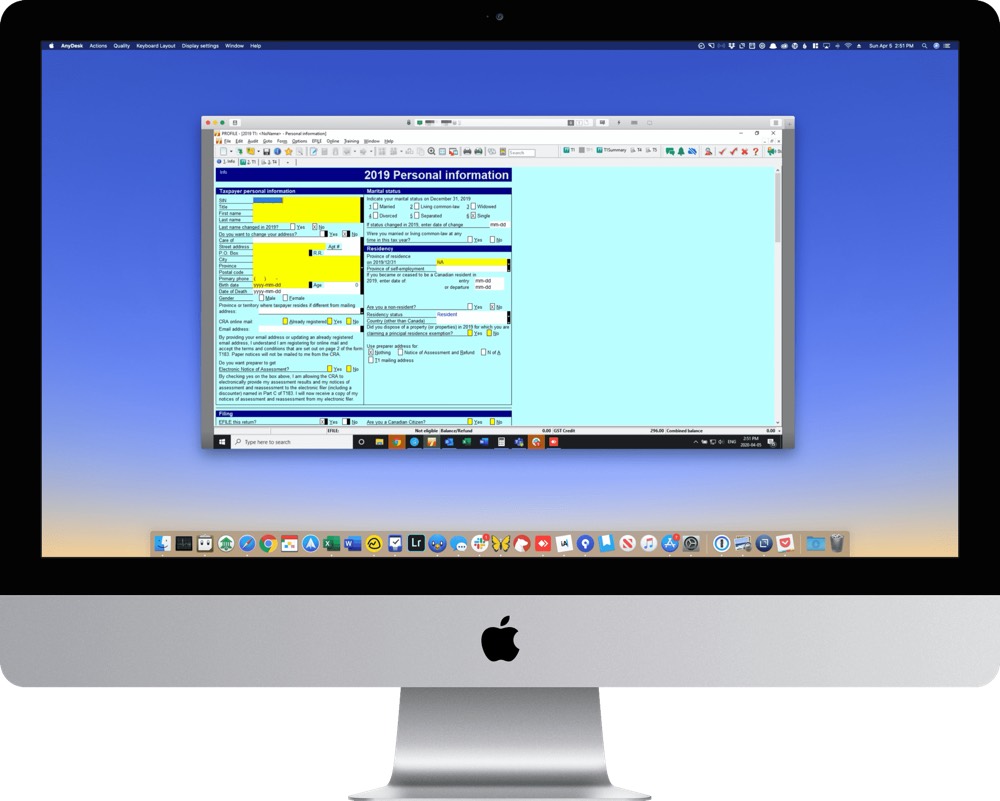
The only major hiccups I’ve run into so far is with keyboard support — both keyboard shortcuts, but also in general keyboard layouts and so on. Obviously, an Apple Magic Keyboard doesn’t have a windows key or an alt key that directly translate if your connected computer is a Windows PC, so some experimentation may be in order. A few anecdotes to throw your way:
- The Command key on an Apple keyboard acts as the Windows key on a Windows keyboard.
- The Option key on an Apple keyboard acts as the Alt key on a Windows keyboard.
- The Control key on an Apple keyboard acts as the Control key on a Windows keyboard.
This will lead to a few muscle memory issues. For instance, “Command + C” will not copy selected data on the connected computer and instead will initiate the Startup menu instead. Alt-tabbing through open windows has to be done with the Option key. And sometimes, I’d notice an Alt key be frozen in place after hitting the Command key, resulting in windows being resized when arrow-keying rather than moving between letters or cells in Excel.
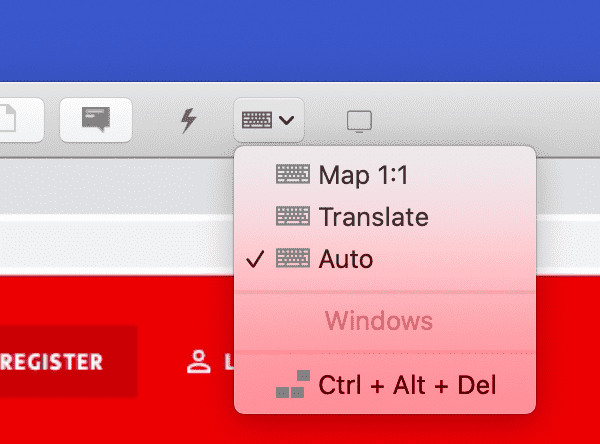
I’ve had better luck in choosing “Map 1:1” in the little keyboard menu at the top of the AnyDesk window, ensuring keyboard shortcuts work as close as you’d expect them to.
In short, you most certainly can use your Apple keyboard to work magic when connected to a Windows PC, but there will be some patience required. Honestly, I found it easiest to use two keyboards at once — I have a Microsoft Surface Ergonomic Keyboard that I use when working on the connected computer and I use the Magic Keyboard when operating the iMac.
Using AnyDesk on the iPad
So far, my experience with AnyDesk on the iPad isn’t as good as my experience with AnyDesk on the Mac. However, my main point of issue was only just updated in Screens for iOS, so perhaps the AnyDesk team is working on it as we speak.
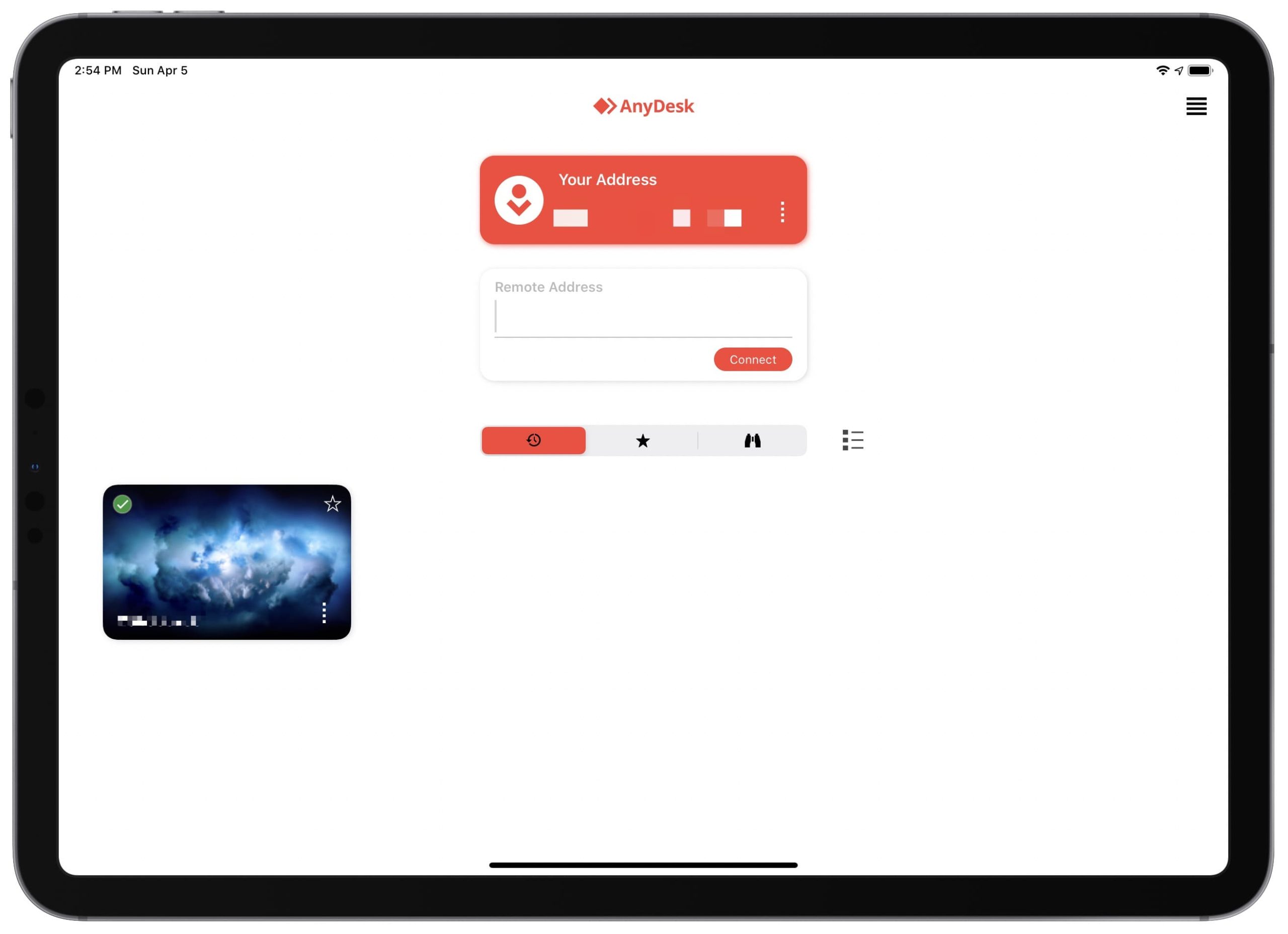
First, in regards to connection ease, AnyDesk on the iPad feels effectively indistinguishable from AnyDesk on the Mac — clicks initiate nearly instantly and everything feels smooth and solid. In my case, I have used a wired connection on my iMac and a Wi-Fi connection on the iPad to connect to my remote PC, and I haven’t seen a noticeable difference between how the two behave. Quite simply, connection speed has been very impressive.
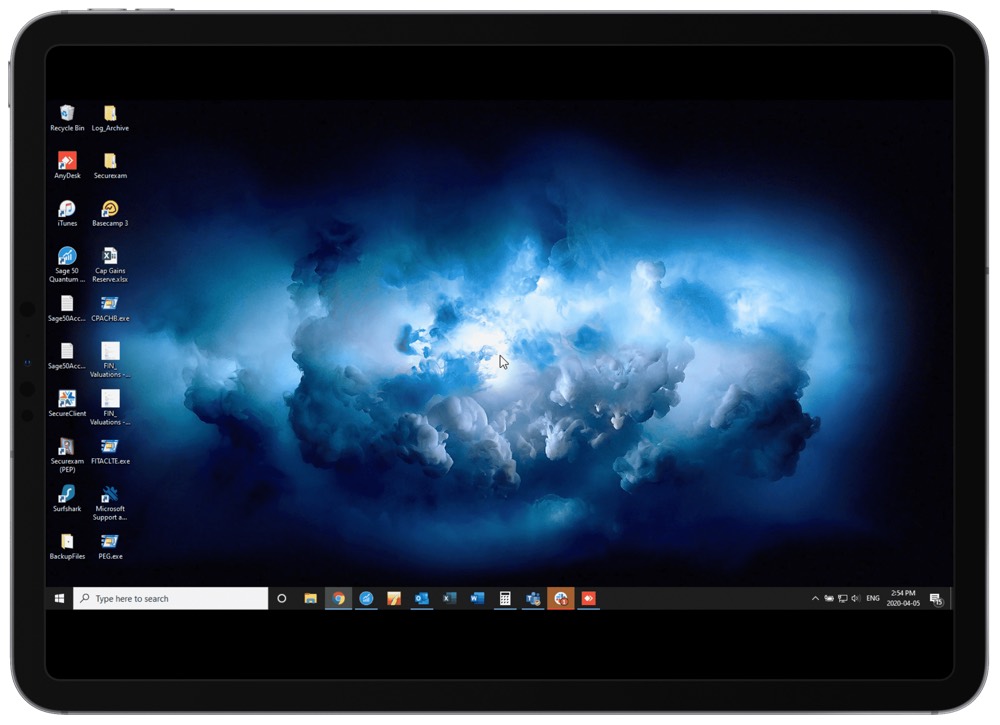
My biggest point of contention is the inability to use the iPad cursor or to use your finger to maneuver through the connected computer. Instead, you have to click and hold or tap and hold on the remote cursor, drag it around the screen, and double tap/click to initiate a click on the other end. This is very different than how a computer normally behaves and causes a lot of friction when trying to work through a task as quickly as possible.
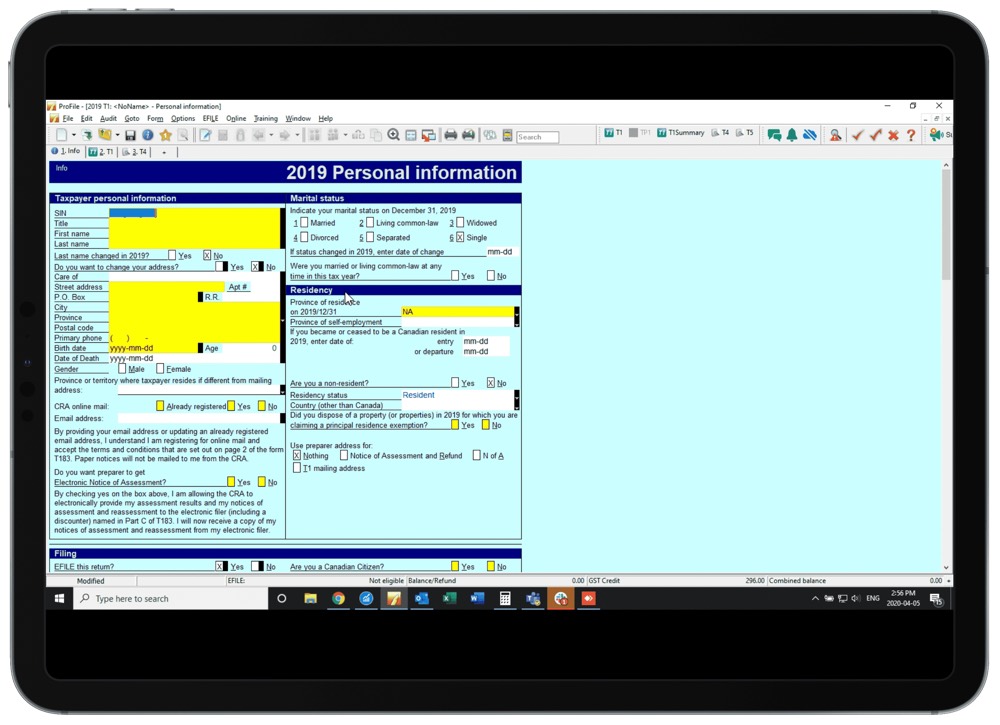
It doesn’t work differently with an Apple Pencil either. The Pencil’s only benefit is in providing a more precise touch target on the display.
As a result, I’ve opted to use the iPad as little as possible for connecting to the remote PC. If I’m in a pinch, it’s nice to be able to clumsily move around Windows 10 and move files into OneDrive, iCloud Drive, or a drafted email if necessary. It’s also possible for referencing information on the other end. But if you’re looking to get a more complex task completed, I expect the current cursor implementation will get in the way.
Wrap Up
In an ideal world, I’ll have a MacBook at the office with enough RAM and capacity to run Parallels with minimal effort and I’ll be able to take that with me wherever I go.
But as it stands now, this little makeshift solution with AnyDesk gives me a glimpse of what that ideal future could be. From anywhere (but right now, specifically, my home office), I can access a remote computer and have it behave almost as though it’s a little virtual computer right in my Mac. If AnyDesk is able to update the iOS app to better support iPadOS 13.4’s new cursor support, the iPad could theoretically transform into a mini-laptop that runs a computer from anywhere in the world.
Thanks to AnyDesk (and fast internet connections), I find myself dreaming about a future world where I can access our binary-old, Windows-only tax software while still operating a Mac full-time.
AnyDesk provides this opportunity, in a backdoor sort of way, right now.
Work From Home….
30% Off The WFH Course Bundle
Get our task and time management mini-course (All the Things (Analog)), plus with our Day One in Depth screencast course. This “WFH Bundle” is 30% off right now.
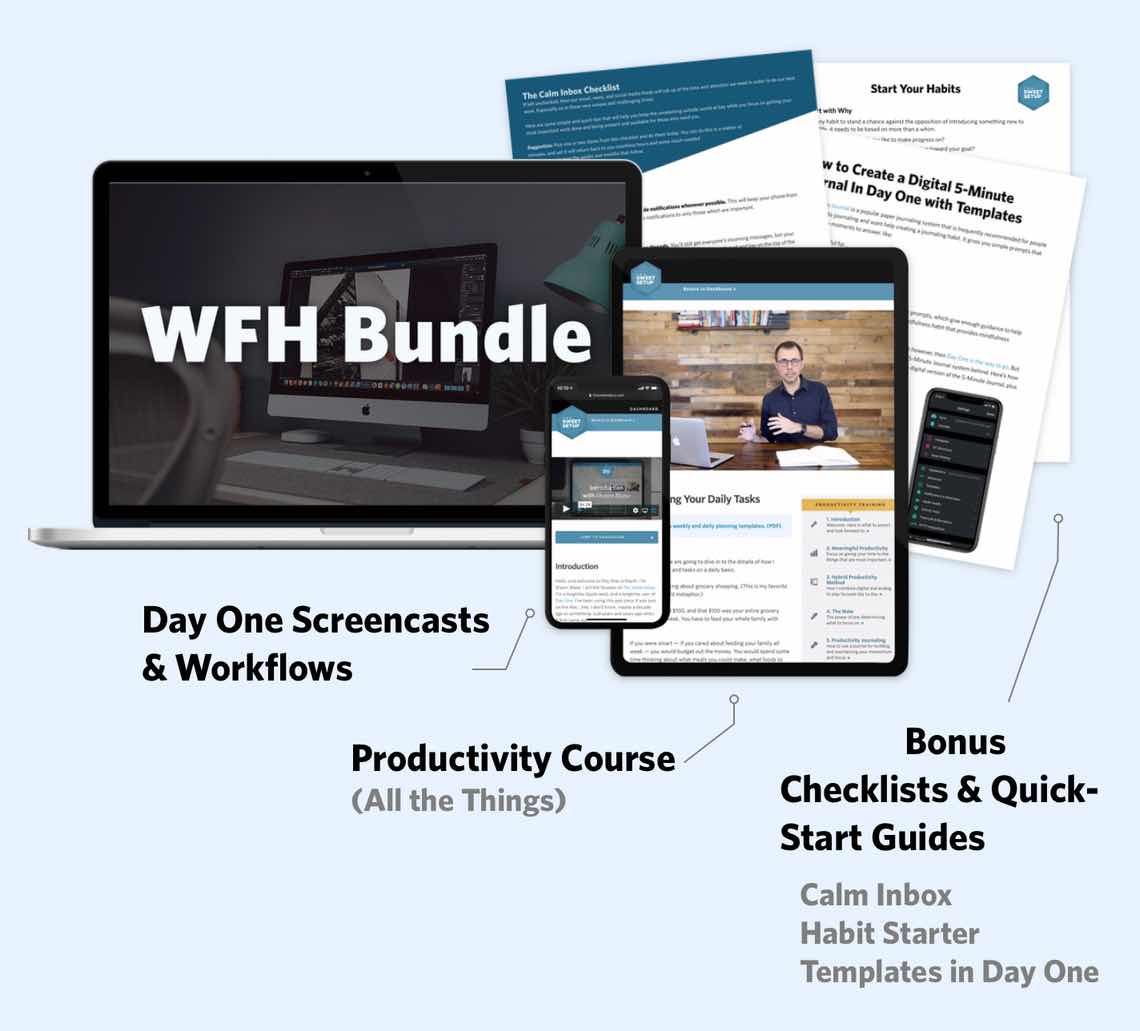
We’ll show you…
- How to schedule your day for maximum productivity in the least amount of time. This is especially helpful if you and your significant other are juggling responsibilities of kids and home life while also trying to do work.
- Weekly planning and reviewing. A great way to get ahead of your upcoming week so you can be prepared and have a priority of what needs to be done.
- Custom Productivity Templates: These are a few of the main PDF templates that you can print out or use on your iPad in order to follow along.
- How to use Day One, the best journaling app out there: which can help with reducing stress and anxiety, celebrating your wins each day, and keeping a log of what is happening in life right now.
Bundle Bonus: The WFH Bundle also includes three bonuses: The Calm Inbox Checklist, the Habit Tracking Quick-Start Guide, and Using Day One templates for the 5-Minute Journal.
Normal Price: $68
WFH Bundle Price: $47 (You save $21)
